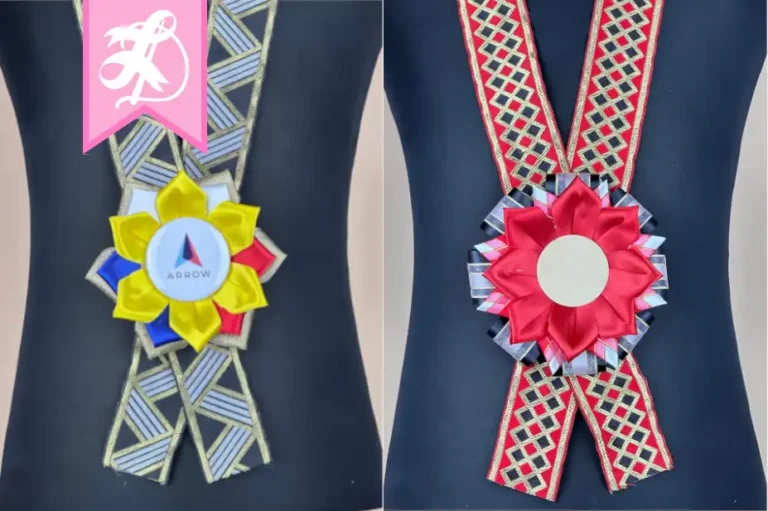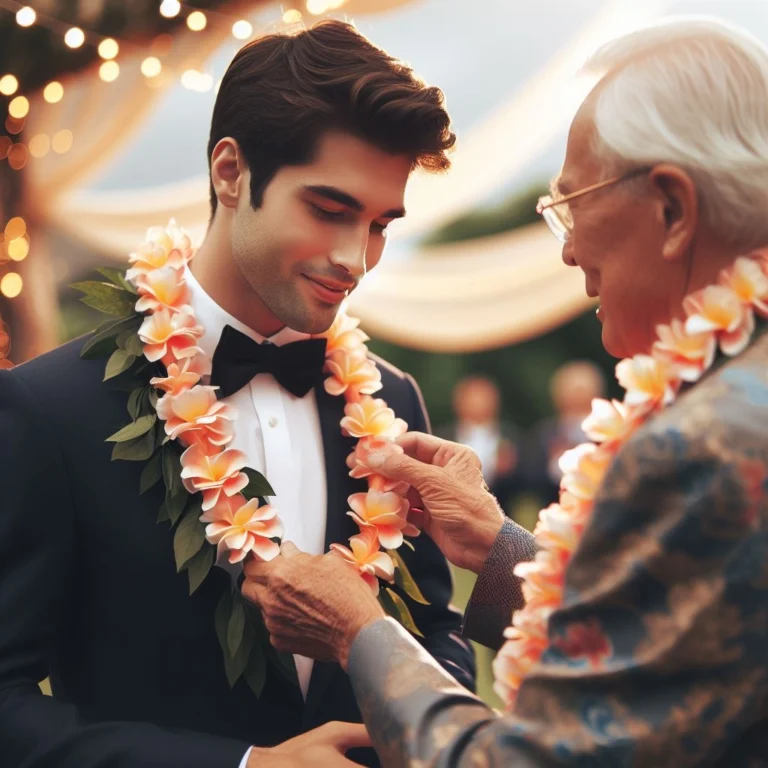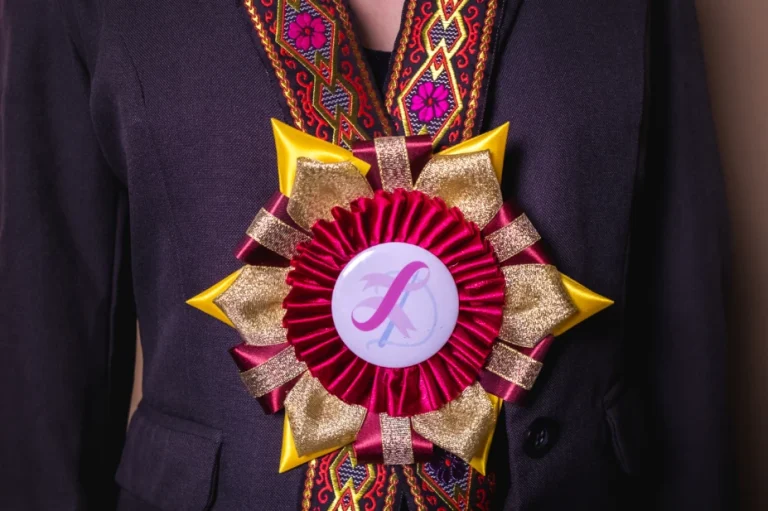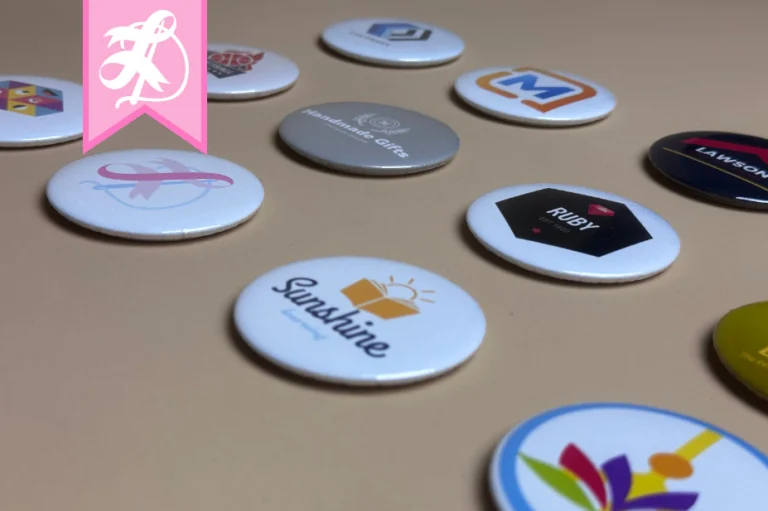Significance of Polynesian Leis
In the heart of the Pacific Ocean lies Polynesia, a stunning region featuring over a thousand islands that create a culture so diverse. From the lush beauty of Hawaii to the pristine shores of Samoa, each island in the region holds a unique cultural identity with its own customs, traditions, and artistic expressions.
Polynesia’s cultural richness extends beyond its breathtaking landscapes. Islands like Hawaii, Samoa, Tonga, and Tahiti form vibrant traditions that are passed down through generations. Let’s explore some highlights that showcase the diverse cultural heritage of Polynesia.
Hula: Harmony in Motion in Hawaii
In Hawaii, the iconic hula dance is more than just rhythmic movements; it’s a storytelling art form blending hand gestures, hip sways, chants, and music. Hula becomes a vessel, preserving Hawaiian stories, myths, and spirituality. It’s not just a dance; it’s the essence of Hawaiian history and culture.
Tatau: Samoan Tattooing as Living Art
In Samoa, the ancient art of tattooing, known as tatau, tells a story of status, achievements, and lineage. Samoan tattoo artists, using a comb and mallet, create detailed designs with profound cultural significance. Today, tatau stands as a respected art form, with Samoans proudly adorning tattoos that reflect their cultural identity.
Kava: Fijian Communion in a Cup
Fijian culture embraces the ritualistic preparation and consumption of kava, a beverage taken from the roots of the kava plant. Kava fosters social and spiritual connections, often shared during important events, ceremonies, and communal gatherings.
Tapu and Noa: Maori Principles Shaping Harmony
Maori culture finds its essence in the principles of tapu and noa, guiding social interactions. Tapu signifies the sacred or restricted, while noa represents the ordinary or common. These principles play a crucial role in maintaining balance and harmony within Maori communities, influencing customs such as the traditional Maori greeting, the hongi.
Polynesia’s Maritime Heritage with Outrigger Canoes
The outrigger canoe, a symbol of Polynesian seafaring prowess, played a vital role in exploring and settling distant Pacific islands. Passed down through generations, outrigger canoeing skills are celebrated in cultural festivals and competitions, paying homage to the ancestors who navigated the vast Pacific waters.
Cook Islands’ Artistic Traditions: Tivaevae and Lei Giving
In the Cook Islands, the art of tivaevae, or quilting, is a cherished tradition where women create vibrant quilt designs that narrate stories and celebrate life events. Adding to this, the practice of lei giving involves presenting intricately woven flower garlands as a gesture of love, friendship, and celebration, further enhancing the communal spirit of the Cook Islands.
History of Leis in Polynesian Culture
Wearing garlands has its beginnings in ancient Polynesia, when skilled navigators created simple leis from of native materials like feathers, leaves, and shells to represent their strong bond with nature. These decorated garlands were used in rituals, ceremonies, and important social gatherings.
Leis became important symbols of love, respect, and aloha as Polynesian communities developed; they embodied the Hawaiian idea of love, peace, and compassion. It became customary to exchange leis as a way to welcome someone warmly and express gratitude and kindness.
Modern Polynesia has seen an increase in the lei-making craft. These days, skilled artisans use a range of materials to create complex designs that combine flowers with avant-garde materials like ribbon and beads. The lei, which represents an enduring feeling of community and connection, has come to be associated with joyful events like celebrations, graduations, and weddings.
The lei serves as a timeless link between the past and present as Polynesians preserve their cultural legacy. The fragrant lei is an important reminder of Polynesia’s heritage in a world that is changing constantly. It encourages locals and visitors to join in the beautiful tale of love, friendship, and celebration that has grown over the years.
Uses of Leis in Polynesia
Leis are more than accessories in Polynesian society; they embody emotions, occasions, and relationships. Far beyond mere adornments, these tangible expressions are woven into the fabric of Polynesian life, serving diverse purposes.
Let’s now explore deeply and thoroughly into the roles that leis play within Polynesia’s culture and traditions.
Expressing Emotions
Leis act as a powerful language for emotions. Whether celebrating a joyous wedding, acknowledging the solemnity of a funeral, or sharing the excitement of a graduation, the choice of lei and how it’s presented speaks volumes. It becomes a visual expression conveying love, respect, sympathy, or congratulations.
Ceremonial Significance
From ancient rituals to modern ceremonies, leis take center stage in various Polynesian traditions. During pivotal life events like coming-of-age ceremonies and initiations, individuals are adorned with leis to symbolize transitions and newfound responsibilities. Giving and receiving leis become sacred exchanges, nurturing connections within the community.
Welcoming and Hospitality
The tradition of offering leis to welcome guests runs deep in Polynesian hospitality. When visitors arrive, they’re often met with the aromatic embrace of leis, creating an sense of warmth and belonging. This welcoming practice extends beyond formal greetings to everyday interactions, reflecting the spirit of aloha and the welcoming nature of Polynesian culture.
Symbolizing Status and Achievement
Leis serve as symbols of status and achievement. In academic settings, graduates receive leis as tokens of recognition and encouragement. Similarly, individuals honored with awards or achievements find themselves draped in leis, symbolizing the community’s acknowledgment of their accomplishments.
Healing and Spiritual Practices
Within traditional Polynesian healing practices, leis crafted from specific plants and flowers are prized for their perceived medicinal properties. These leis become important in rituals aimed at promoting both physical and spiritual well-being. The fragrant and therapeutic qualities of certain flowers contribute to the holistic approach to health ingrained within Polynesian culture.
Community Building
Leis play a key role in bringing people together. Whether at festivals, cultural events, or community gatherings, sharing leis symbolizes unity and shared experiences. The collaborative spirit of creating and exchanging leis strengthens social bonds, highlighting the interconnectedness that defines Polynesian communities.
Different Kinds of Leis and Occasions
Making leis is more than simply a decorative craft in Polynesia; it’s an established custom that runs through the islands. The number of leis found here forms a vivid kaleidoscope, with each one unique in terms of design, color, and meaning. Now, we’ll explore different Polynesian leis, stirring the spirit of the island, embracing tradition, celebration, and connection.
All these leis found their own role to play that reflects the occasions they are used for, as well as the diversity of the islands’ cultures.
Maile Lei
Originating in Hawaii, the maile lei has a special role in ceremonial practices. Crafted from the fragrant leaves of the maile vine, it carries a unique earthy scent. This lei is used in sacred ceremonies, weddings, and significant events. It symbolizes love, respect, and the promise of good fortune.
Ti Leaf Lei (Kī Leaf Lei)
In Polynesian tradition, the ti leaf lei, which is made from the lush green leaves of the ti plant, is a timeless and versatile symbol. This lei, which is commonly used in blessings, ceremonies, and rituals, symbolizes power, protection, and positive energy. It gives cultural importance to many kinds of celebrations.
Pikake Lei
Embrace the delicate and delightful aroma of the pikake lei, adorned with tiny white jasmine blooms. Celebrated for symbolizing purity and beauty, this lei is a frequent choice at weddings and special events, capturing the essence of celebration and love.
Orchid Lei
Indulge in a visual feast with the orchid lei, showcasing unique and vibrant blooms from various orchid varieties. A popular expression of love and gratitude, orchid leis find their place during birthdays, festivities, and as a warm welcome for special guests.
Plumeria Lei (Frangipani Lei)
Woven from fragrant and colorful plumeria flowers, the lei becomes a symbol of Polynesian beauty. When worn during festivities, it emanates charm, cheerfulness, and the tropical ambiance that defines the islands.
Cigar Flower Lei (Kukui Nut Lei)
This lei features the cigar flower, or kukui nut, known for its durability and unique appearance. Polished nuts strung together create a lasting accessory, often worn to signify protection and enlightenment.
Ginger Lei
Made from vibrant and aromatic ginger flowers, this lei is a burst of color and fragrance. Popular for its refreshing scent, it’s commonly worn during festive occasions, symbolizing good wishes and positive energy.
Shell Lei
Crafted from an array of shells found in the Pacific, the shell lei reflects Polynesia’s coastal heritage. Each shell carries its own symbolism, making these leis a choice for protection and a connection to the natural beauty of the ocean.
Significance and Meaning of Lei Gifting
Leis in Polynesian culture go beyond mere adornments; they symbolize love, respect, and deep connections. Receiving a lei isn’t just getting something pretty; it’s holding onto the giver’s sentiments, fostering unity and camaraderie in the community.
Now, let’s delve into the aspects that reveal the cultural richness of lei-giving:
Aloha in Bloom
Offering a lei isn’t just presenting something beautiful; it’s sharing the warmth and friendliness integral to the Polynesian way of life—a genuine gesture rooted in aloha, embodying love, compassion, and sincere hospitality.
Symbol of Celebration
Leis hold a central role in Polynesian celebrations, be it marking milestones, birthdays, weddings, or graduations. Placing a lei on someone isn’t just about the flowers; it’s a tangible expression of joy, festivity, and shared happiness that transcends words.
Welcoming with Fragrance
In Polynesian hospitality, the tradition of giving leis to welcome guests runs deep. As visitors arrive, the sweet fragrance and vibrant colors of leis greet them, instantly creating a sense of belonging and warmth. It’s a gesture that goes beyond words, making the guests feel like they are embraced and welcome.
Expressions of Love and Affection
Offering a lei is a heartfelt expression of love, admiration, or affection. Whether shared among friends, family, or romantic partners, presenting a lei communicates sentiments that words alone may not capture. It stands as a tangible symbol of the emotional bond shared between individuals.
Cultural Rituals and Traditions
Leis play a pivotal role in Polynesian cultural rituals and traditions. From sacred ceremonies to rites of passage, draping someone with a lei symbolizes transition, acknowledgment, or blessing. It serves as a visual language that speaks volumes within the rich cultural heritage of the islands.
Acknowledgement and Appreciation
Leis often convey acknowledgment and appreciation, whether in recognition of achievements, talents, or expressions of gratitude. Giving a lei becomes a way of saying your efforts are valued, and you are celebrated.
Unity and Connection
Giving leis in Polynesian communities fosters unity. Whether during festivals, gatherings, or daily interactions, leis connect and bring individuals together, reinforcing a sense of unity.
In Polynesia, giving leis goes beyond tradition; it’s a timeless expression of the values defining the islands’ culture. From celebrations to welcomes, wearing a lei embodies the spirit of aloha, creating a fragrant essence of love, connection, and Polynesian traditions.
Etiquette in Giving Leis
While giving leis is a common practice, it’s crucial to observe certain etiquette. A lei is typically offered with a warm embrace and a cheek kiss, expressing sincerity and affection. Graciously accepting the lei and wearing it throughout the event is customary, symbolizing appreciation.
Selecting the Right Lei
Choosing the appropriate lei for a specific occasion or individual is vital. Vibrant and fragrant flower leis like plumeria or orchid are suitable for celebrations, while more subdued ti leaf leis may be fitting for solemn occasions. Consider the significance and cultural context when choosing a lei.
Presenting with Aloha
Presenting a lei follows the spirit of aloha, expressing genuine warmth and goodwill. The giver typically offers the lei with both hands, delicately preserving its form. Eye contact and a sincere smile accompany the gesture, reinforcing the heartfelt nature of the exchange.
Accepting with Gratitude
Accepting a lei is a gracious act, and it’s customary to receive it with gratitude and humility. Upon receiving the lei, it’s polite to express a genuine ‘mahalo’ (thank you) and, if appropriate, reciprocate the sentiment with a returned lei or another gesture of appreciation.
Wearing the Lei
The proper way to wear a lei depends on the context and occasion. In many cases, leis are draped over the shoulders, allowing fragrant blossoms to rest gently against the chest. However, some cultural events may have specific guidelines for lei placement, and it’s essential to observe and follow local customs.
Never Refusing a Lei
In Polynesian culture, it’s considered impolite to refuse a lei. Whether offered by a friend, family member, or even a stranger, accepting the gesture with appreciation is a respectful acknowledgment of the effort and sentiment invested in the exchange.
Proper Disposal of the Lei
Once the lei has fulfilled its purpose, handling its disposal with care and respect is important. Depending on cultural practices, leis may be returned to nature by placing them in a designated area or returning them to the ocean. It’s important to inquire about local customs to ensure the appropriate and respectful disposal of the lei.
How to Create a Traditional Polynesian Lei
Crafting a traditional Polynesian lei is a meticulous art, with skilled artisans using locally sourced materials to weave intricate patterns and combine cultural symbolism. The process often involves passing down techniques from one generation to the next, making sure this ancient craft is preserved.
Now, let’s move on to on a simple tutorial to create your own traditional lei:
Materials Needed
- Fresh flowers (such as plumeria, orchids, or any fragrant blossoms)
- Needle and strong thread (preferably green)
- Scissors
- Ribbon or yarn (optional)
- Ti leaves or greenery (optional, for added texture)
Step 1: Gather Your Materials
Assemble a variety of fresh flowers, making sure they’re clean and pest&-free. Choose blossoms with vibrant colors and tropical fragrances that capture the essence of Polynesia. Also, ready your needle, thread, scissors, and optional ti leaves or greenery.
Step 2: Prepare the Flowers
Trim the flower stems, leaving only a few inches, and get rid of excess leaves for a tidy arrangement. If using ti leaves or greenery, cut them into smaller, manageable pieces.
Step 3: Thread the Needle
Thread the needle with a sturdy green thread, forming a loop at the end to serve as a knot for securing the first flower.
Step 4: Commence Stringing the Lei
Take the first flower, threading the needle through the center and securing it with the looped knot. String the flowers by guiding the needle through the base of each blossom. If incorporating ti leaves or greenery, alternate between flowers and leaves for added texture.
Step 5: Establish a Harmonious Pattern
As you string more flowers, pay attention to creating a well-balanced pattern. Consider the distribution of colors and the overall visual appeal of your lei. Continue threading until you achieve the desired length, keeping in mind that leis typically measure 36-40 inches.
Step 6: Secure the Ends
Upon reaching your desired length, firmly tie off the ends with a double knot to ensure the lei is well-secured, preventing unraveling.
Step 7: Add a Final Flourish (Optional)
For an extra decorative element, you can try tying a ribbon or yarn around the ends of the lei. This adds a neat and polished touch.
Step 8: Revel in Your Handcrafted Lei
Your simple Polynesian lei is now prepared to be worn, gifted, or used to add a hint of tropical charm into any occasion. Wear it over your shoulders or share it as a symbol of warmth and connection.
Diverse Materials for Crafting Leis
The materials employed in crafting leis mirror the rich diversity of the cultures that give rise to them. From lively flowers like plumeria, orchids, and pikake to sturdier elements like shells, seeds, and feathers, the extensive range of options allows leis to be tailored to fit the occasion and individual preferences. Here’s a rundown of typical materials traditionally utilized in crafting Polynesian leis:
Flowers
- Plumeria: Renowned for its aromatic blossoms, plumeria is a favored selection for leis, symbolizing beauty and positivity.
- Orchids: These exotic flowers, available in various hues, are frequently employed to fashion vibrant and visually appealing leis.
- Hibiscus: The vibrant and iconic hibiscus flower is a common choice, adding a burst of color to leis.
Leaves and Greenery
- Ti Leaves: The broad, lush green leaves of the ti plant are widely used in lei-making, symbolizing good luck and protection.
- Ferns: Different types of ferns and other greenery are included to introduce texture and contrast to leis.
Shells
- Cowrie Shells: Small and smooth cowrie shells find their place in leis for their natural beauty and symbolic significance.
- Puka Shells: Distinguished by their naturally occurring holes, puka shells give a unique touch to Polynesian leis.
Seeds and Nuts
- Kukui Nuts: Also referred to as candle nuts, kukui nuts are polished and strung together to craft durable and distinctive leis.
- Job’s Tears Seeds: These small, bead-like seeds are mostly chosen for their natural coloring and texture.
Bird Feathers
In some traditional leis, especially in ceremonies, bird feathers are added to introduce additional symbolism and cultural significance.
Raffia or Twine
- Raffia: Natural fibers sourced from the raffia palm are employed to tie and secure various elements of the lei, imparting an earthy and rustic touch.
- Twine: Robust twine crafted from natural materials is commonly utilized to string together flowers, leaves, and other components of the lei.
Bamboo or Wood
- Bamboo Beads: Small bamboo beads are occasionally integrated into leis to introduce additional texture and a touch of natural elegance.
- Wooden Beads: Carved wooden beads or elements may be added to leis, showcasing traditional craftsmanship.
Fruits
Citrus Peels: In specific regions, dried citrus peels are used for their aromatic qualities and distinctive appearance in lei-making.
These materials, harvested from the rich natural surroundings of Polynesia, contribute to the cultural richness and symbolic significance of traditional Polynesian leis. The selection of materials often depends on the occasion, cultural practices, and individual preferences.
Evolution of Leis to Modern Context
Today, leis have moved beyond their traditional roots. While crafting and giving leis is still a treasured tradition, modern versions use silk and synthetic materials for longer-lasting keepsakes. Leis are now embraced globally as symbols of cultural identity, especially by those with Polynesian heritage.
Even with new materials and designs, the timeless values of respect, warmth, and connection persist in this tradition. Beyond Polynesian communities, many cultures worldwide have adopted the style and way of giving leis, making them meaningful in diverse cultural celebrations. Leis have evolved to fit into our ever-changing world while retaining their universal appeal.
Hawaiian Welcoming Lei
In today’s world, the Hawaiian welcoming lei, or “aloha lei,” is a symbol of warmth and hospitality. When welcoming guests, especially beyond Hawaii, people present vibrant and fragrant flower leis, often made from plumeria or orchids. It’s a way of embodying the spirit of aloha and embracing newcomers.
Money Lei for Graduation
A modern graduation gift in Polynesian communities is the money lei. Instead of flowers, this lei is adorned with folded bills or coins, symbolizing good luck and prosperity for the graduate. It’s a unique blend of tradition and practicality, adding a special touch to academic celebrations.
Rosette Leis in the Philippines
In the Philippines, the tradition of lei-making has evolved into intricate rosette leis. Crafted with folded ribbons or fabric, these leis bring vibrant colors and meticulous craftsmanship to various celebrations, from weddings to lively fiestas. It’s a creative expression reflecting the Filipino spirit of festivity and creativity.
Key Takeaways
Reflection of Culture: Leis are embedded into the culture of Polynesia, reflecting the values, traditions, and interconnectedness that define its people.
Symbolism and Expression: More than adornments, leis symbolize emotions like love, respect, and connection, providing a means to express deep sentiments.
Time-Honored Craft: Lei-making is a respected tradition, highlighting the importance of preserving cultural heritage by passing down this art through generations.
Diverse Occasions: Leis always are a part of occasions, from joyous celebrations to solemn ceremonies and heartfelt farewells, capturing the range of emotions and experiences in Polynesian life.
Continuity and Adaptation: Rooted in tradition, leis have adapted to modern contexts, making sure that their timeless relevance and appreciation is still present in modern Polynesian culture.





